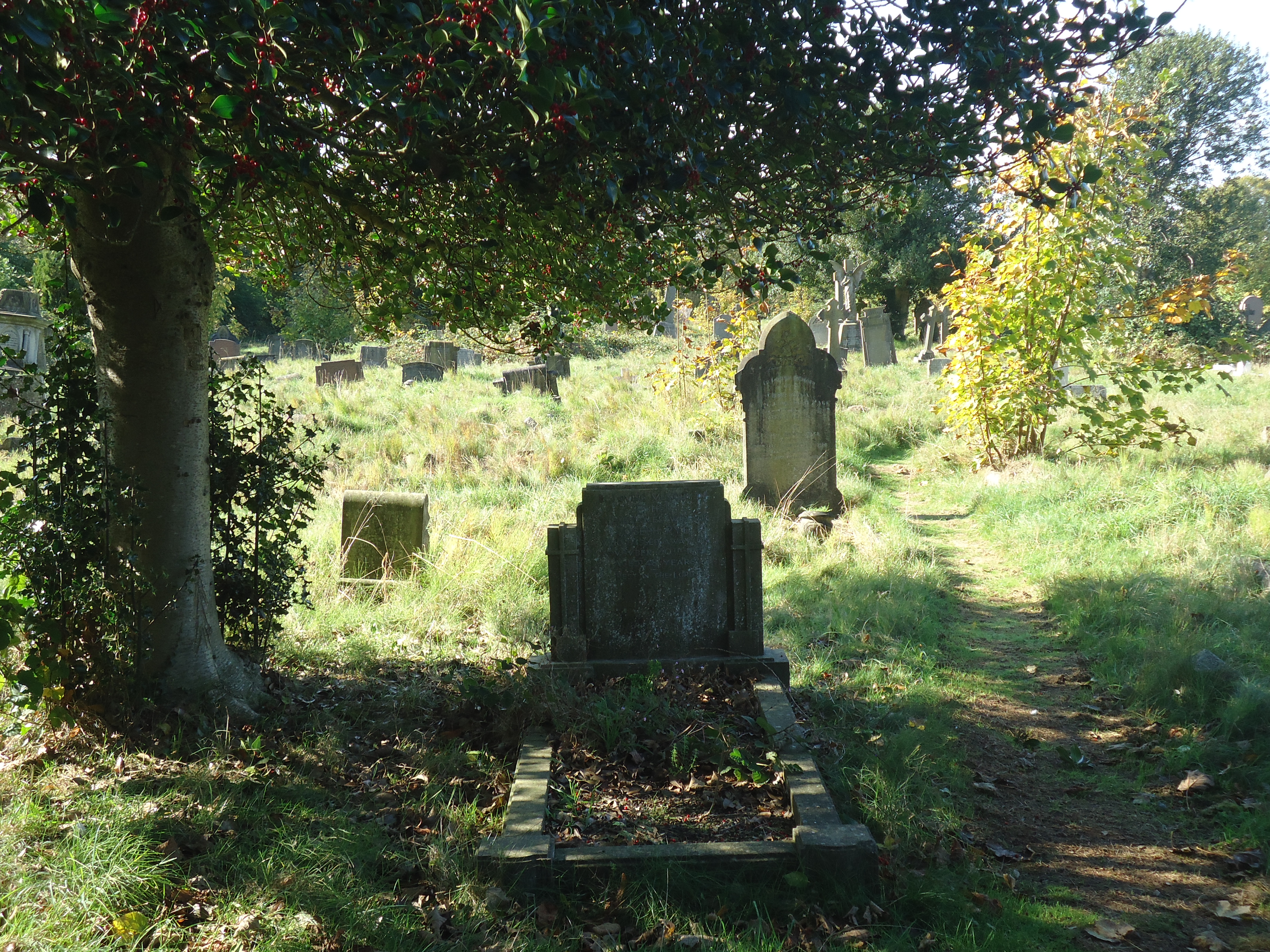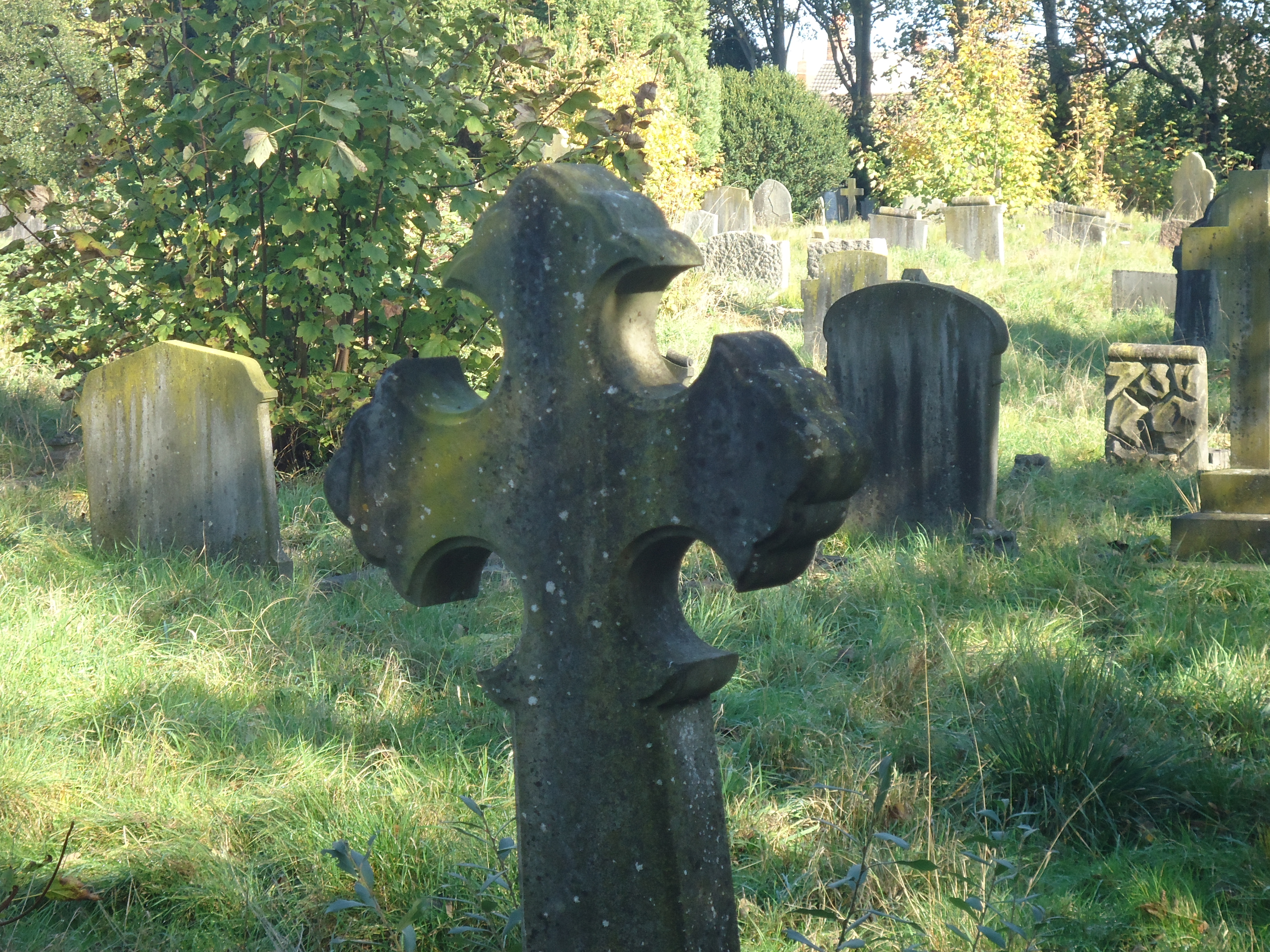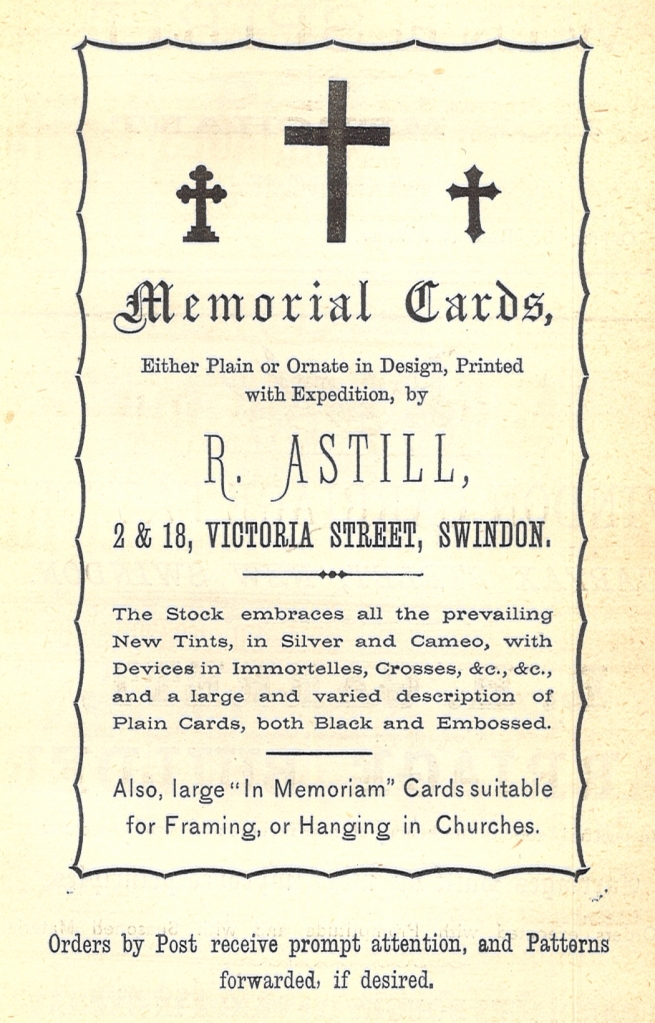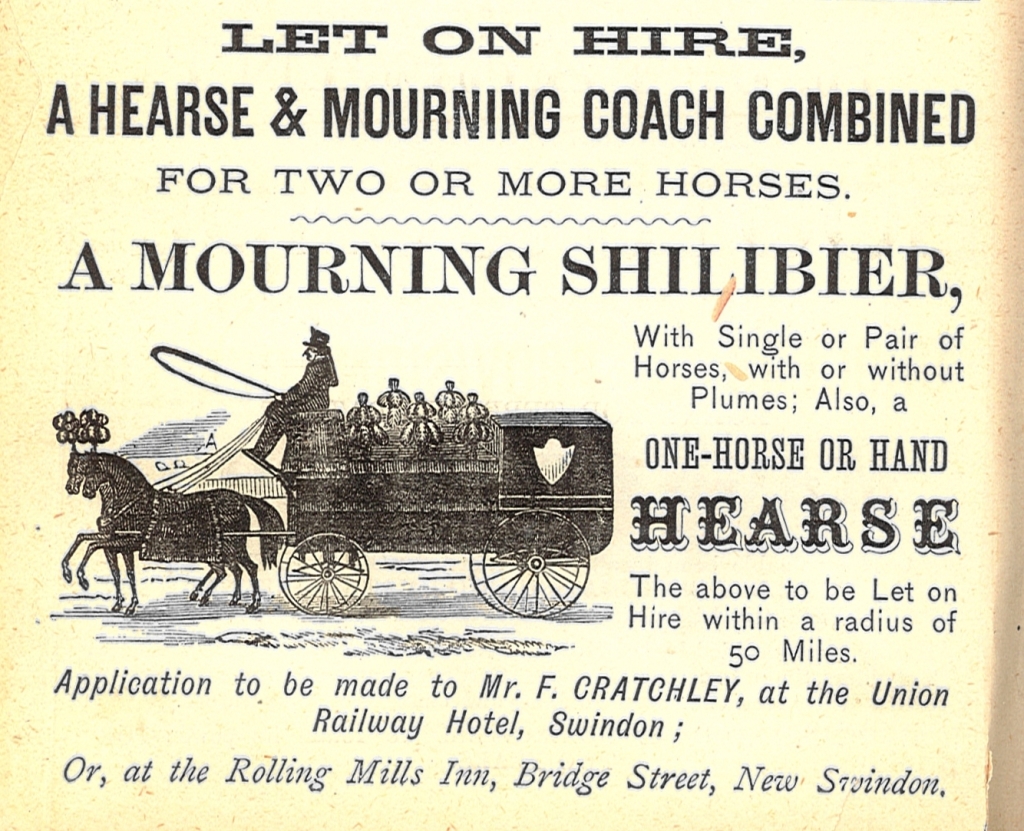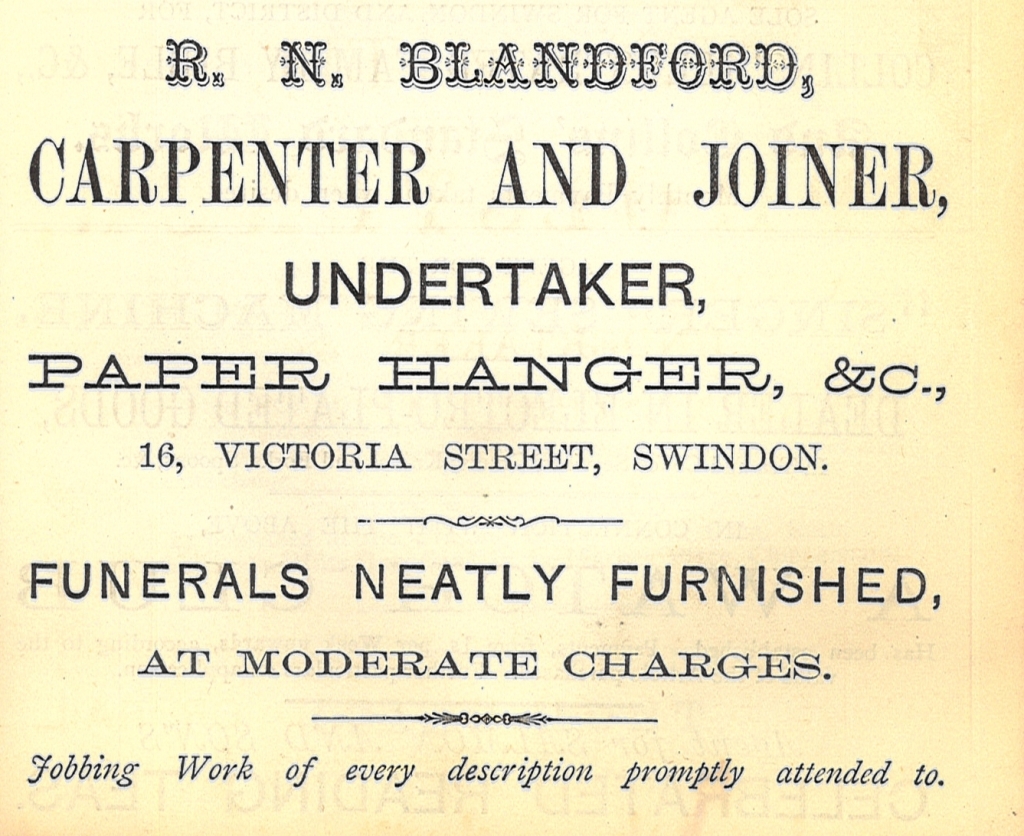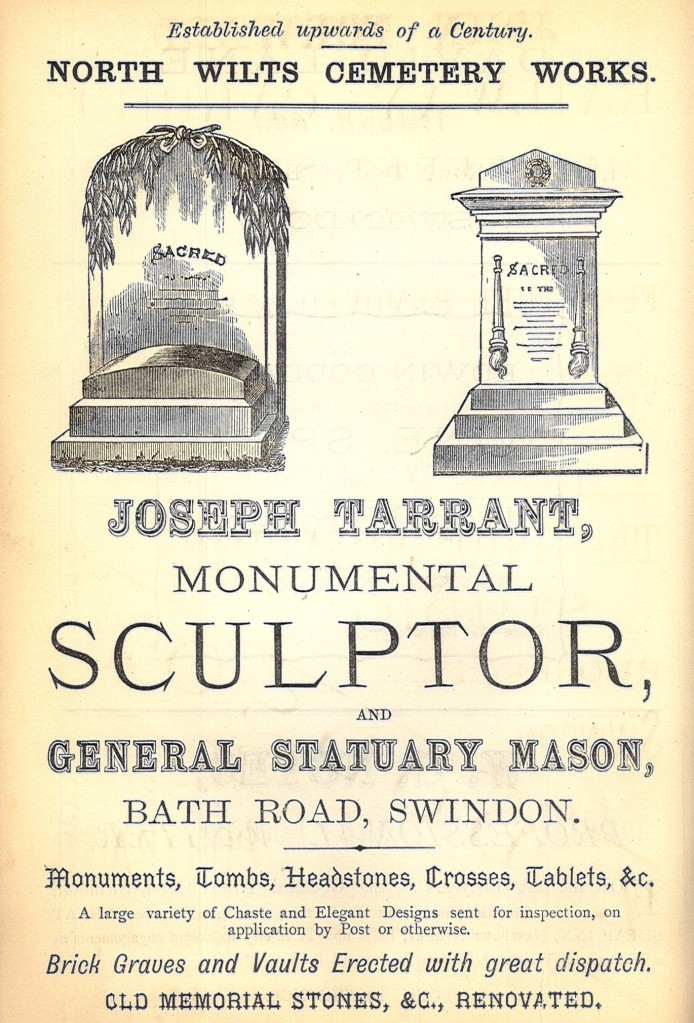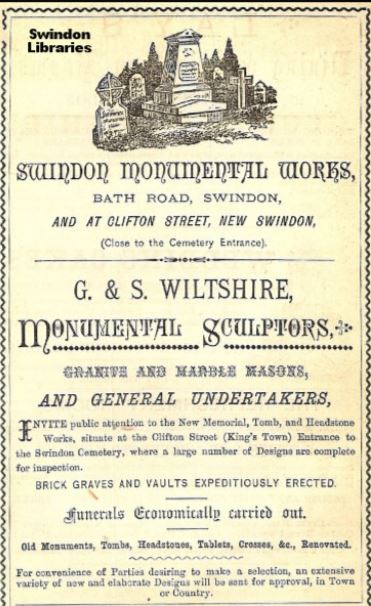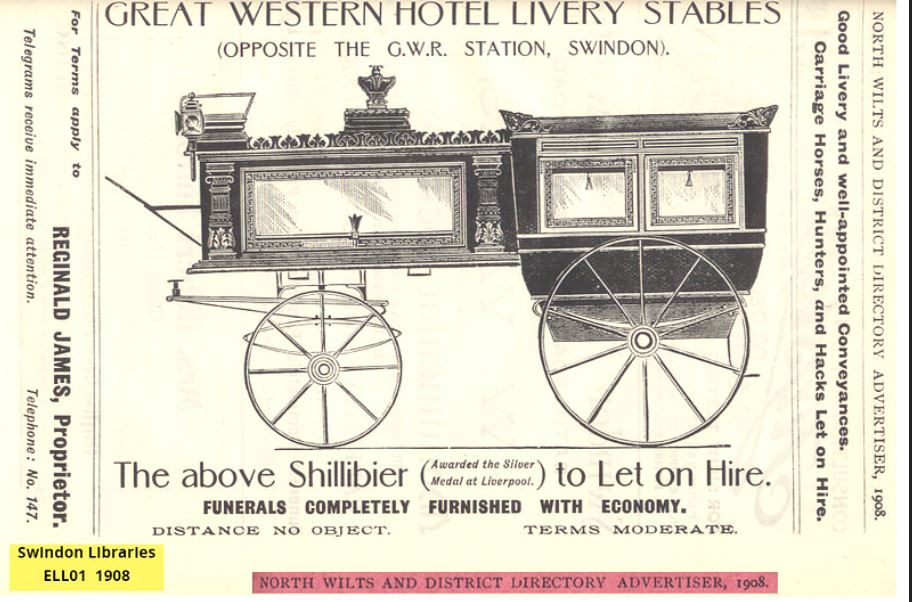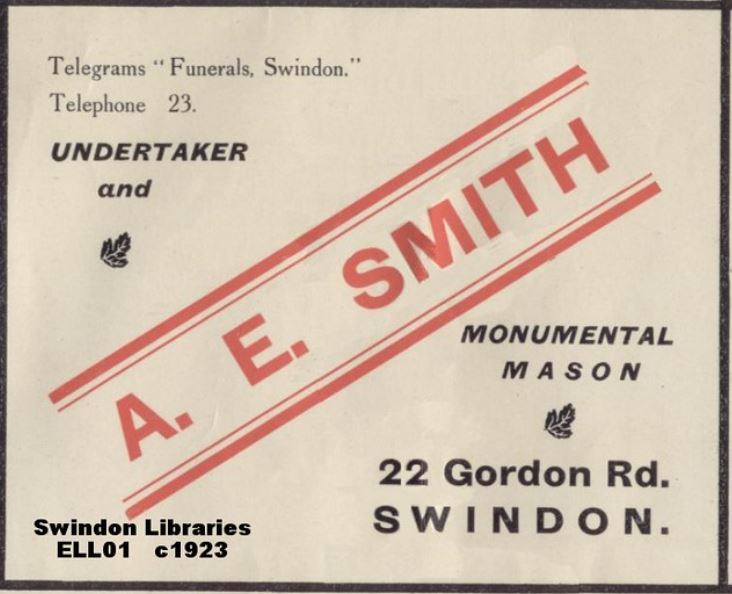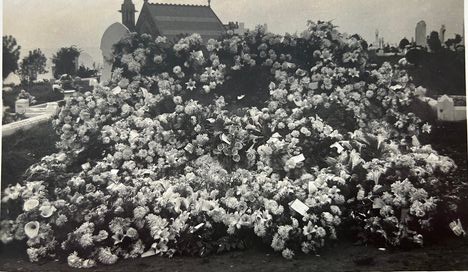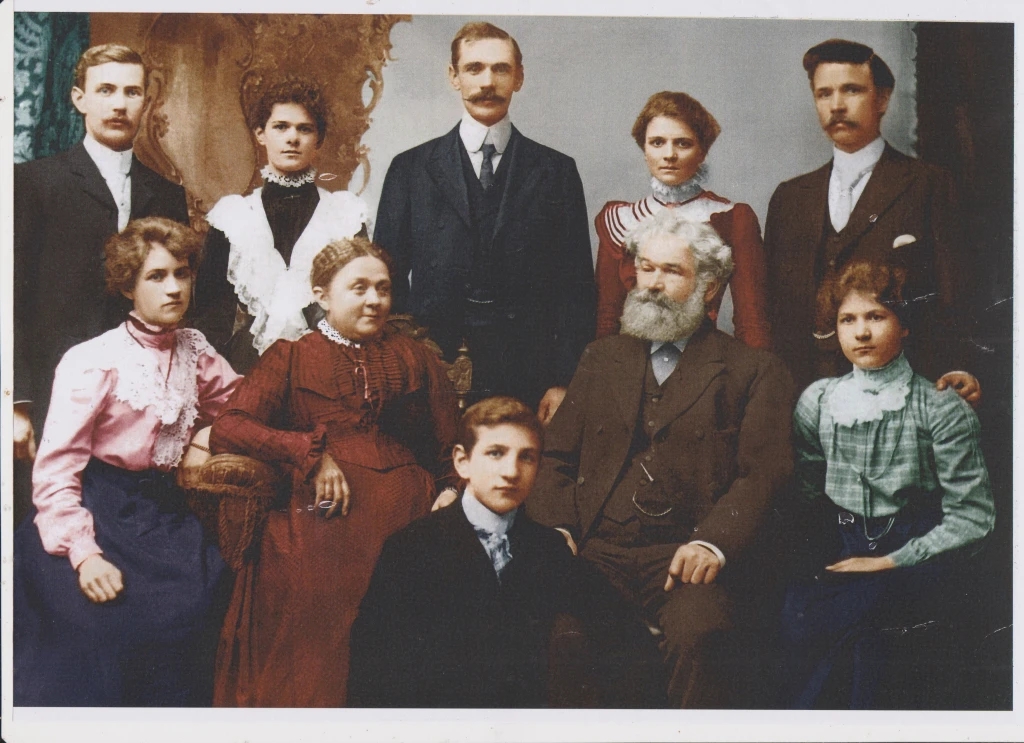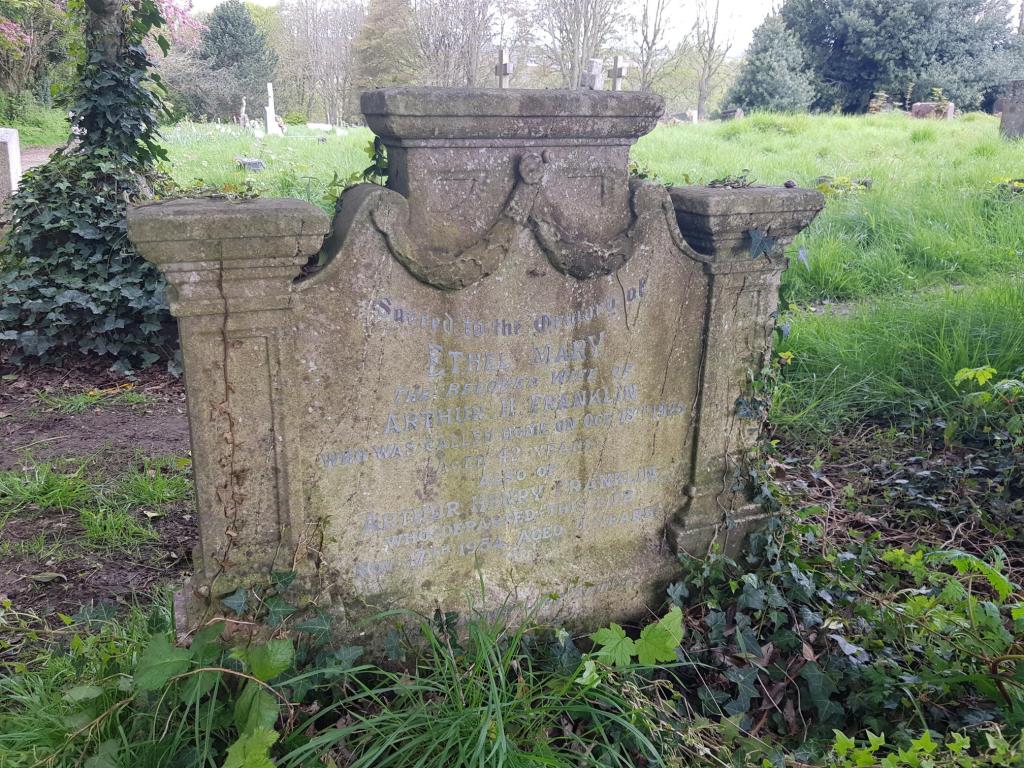
Sadly, we have arrived at the last day of our virtual walk through Radnor Street Cemetery – it’s been fun, hasn’t it and the weather wasn’t too bad? It could have been worse. We conclude by stopping off at the grave of William Chambers.
Despite a shortage of readily available building land and a depression in the railway industry during the 1870s, Swindon enjoyed a building boom throughout much of the late Victorian period. Many of our street names bear testimony to a number of local builders, George Street, Crombey Street, Colbourne Street, Ponting Street, Turner Street.
William Chambers lived and worked as builder and funeral director in the end house in Ashford Road, the one with the Calvary cross in the brickwork. The silhouette of the shop sign can still be seen. As we have already discovered William Chambers was building on the Kingshill estate in the 1890s.
William was born in Stroud in 1839 the son of Samuel, a handloom weaver, and his wife Maria. In 1859 he married Sarah Tyler and the couple raised their family of eight children in nearby Bisley where William then worked as an agricultural labourer.
In 1871 he was working as a bricklayer and by 1884 the family had moved to Swindon where William established himself as a builder and contractor. His four sons would eventually join him in the business, William and Alfred both bricklayers and Robert and Samuel who were joiners.
From 1884-1897 William was engaged in building projects in Stafford Street and Hythe, Kent and Maidstone Roads. In the last decade of the nineteenth century William was also busy building in Ashford Road.
At the time of the 1891 census eldest married sons Alfred and William both had homes in Stafford Street. Family folklore tells how so many relatives once lived in Stafford Street that it was known locally as Chambers Street.
William’s son Samuel took over the family business after his father’s death. A 1906 trade directory entry describes the business at 1 Ashford Road as under new management – S. Chambers (late W. Chambers) builder & contractor, dealer in all kinds of building material, funerals completely furnished, repairs promptly attended to at moderate charges.
William died in 1901 and Sarah in 1926. I think this stylish headstone befits a couple who spent their lives in the funeral business.

I’ve very much enjoyed your company this week. You may like to join us for ‘an in person’ cemetery walk this Sunday September 29. Meet at the chapel 1.45 pm for a 2 pm start.
Extracts taken from To Autumn by John Keats

